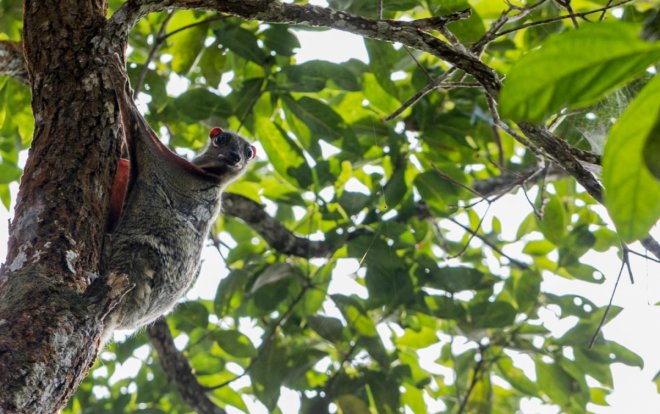
Researchers from the California Academy of Sciences and the Habitat Penang Hill discovered new species of scorpion, fly, bacterium, and Tardigrade from rainforests in Malaysia's Penang Island.
The 117 member team documented the flora and fauna of the rainforests from an expedition which studied the green canopies of towering trees as well as dark, damp caves. The experts had documented over 1400 species including at least twenty-five plants and animals which were not known to be existing on the island.
The newly founded inhabitants of the island includes the Sunda colugo or flying lemur, the red giant flying squirrel, the long-tailed giant rat, the Indomalayan niviventer, the lesser mouse deer, and species of ground squirrels, birds, bacteria, bats, ants, orchids, flies (including two mosquitoes), frog and microscopic water bears.

The rainforests on the Penang Island is believed to be around 130 million years old. George Town, a modern metropolis is only a few miles away from this ancient rainforests.
The scientists of the Academy, UC Berkeley, The Tree Projects and other partner organizations climbed over 5236 vertical feets during the expedition to film the first-ever canopy survey in Malaysia. Samples of orchids, ferns, and epiphytes (air plants), were collected and documented. Fifty-nine mammals including macaques, dusky leaf monkeys, tree rats, and flying squirrels were also documented using motion-sensitive cameras.
The expedition was organized in the forests which cover over 19,768 acres or 8000 hectares of land. The research might contribute to the nomination of the rainforests as a United Nations Educational, Scientific, and Cultural Organization (UNESCO) biosphere reserve.

According to researchers, the new species of scorpion identified from the forests belong to the category of "ghost scorpions", one of the oldest lineages on Earth. These scorpions are natives of Southeast Asia. They show faint fluorescence when exposed to ultraviolet light but are difficult to spot.
Dr. Lauren Esposito, an academy arachnologist of the research team said, "We had a hunch this new species was out there... but it was really a matter of odds. For every hundred logs or so we turn over, we find a scorpion. We got lucky."
An iridescent fly was found among the coastal palm-like plants. The researchers have also found a new species of tardigrade or water bear. These eight-legged micro animals generally inhabit moss and lichens covered terrain. Also, the newly discovered cryptic colugo or flying lemur helped researchers to understand the communications in nocturnal gliding mammals.
Even though the research paper won't be published until the completion of the research, the scientists have been popularizing their findings through social media and apps. A mobile app named as iNaturalist has been used by scientists to share their observations. A gallery of expedition photos has been uploaded to an online magazine known as bioGraphic.
Though with this findings scientists have surely reached another milestone, rainforests of Malaysia, Indonesia, Sumatra, and Bali, which sustains varieties of species, are fast depleting due to deforestations and human encroachment. Acres of forests are being chopped down to make land for oil palm cultivation and this had adversely affected the flora and fauna of the region.









